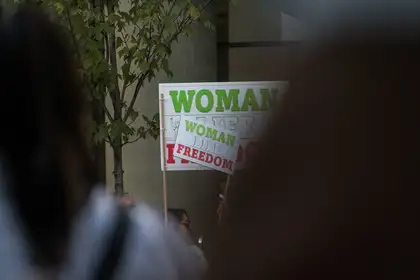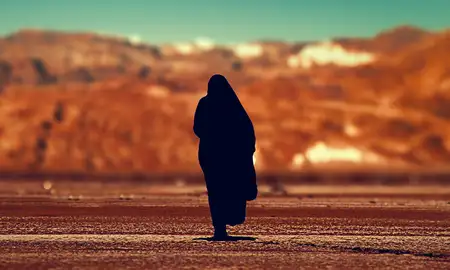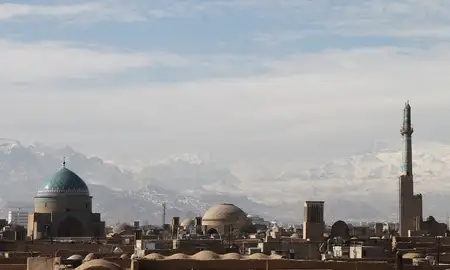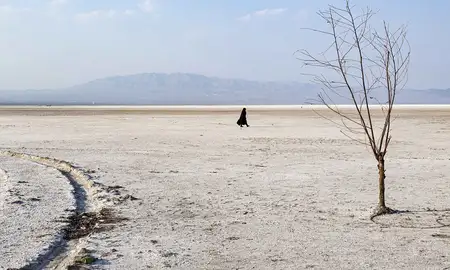
Protests in downtown Vancouver.
A year ago, on 16 September 2022, a 22-year-old Kurdish Iranian girl, Mahsa (Jina) Amini, who was visiting Tehran with her brother, was killed while in the custody of Iran’s morality police for not wearing her hejab adequately.
Her brutal murder ignited a volatile political situation. Demonstrations across Iran continued for months. University students and academics, journalists, physicians, lawyers and other activists have been arrested, tortured and expelled from their jobs. Over 20,000 people have been arrested, over 500 people have been killed and seven people have been executed. All these atrocities have been conducted to install fear in the society and silence the “Woman, Life, Freedom” revolution.
Neither of these atrocities, however, have been effective. Courageous women in different cities still defy the rules of compulsory hejab. Regardless of numerous punishments including fines, confiscation of national ID cards, confiscation of driver licenses, expulsion from work or being banned from public malls and parks, women refuse to give up the victories they have achieved.
The latest report of the Center for Strategic Guidance in the government to Supreme Leader of Iran Ali Hosseini Khamenei shows a widespread dissatisfaction with the regime. It has called the opposition to the mandatory hejab a "symbol of civil disobedience" and any failure of the republic in controlling this disobedience could result in the spread of disobedience in other areas.
A week before the anniversary of Mahsa’s death, security forces stormed the streets of Iran’s cities and further demonstrated how the regime is now afraid of any sign of social gatherings.

Dr Negar Partow.
During the last year, the Islamic Republic’s security apparatus has strategised against the revolution in full force; from gathering intelligence, to trying to divide the opposition, recruiting more and younger members and using religious and political oppressive tools.
These strategies, however, lack diversity. They are all punitive and exclusionary and use intimidation and force as tools for submission. These strategies have two targets. The first is to oppress the public and the second is to deter their supporters from defection. Rather than achieving these goals, the republic is more fractured than ever.
The vast financial and sexual corruption of the officials in the republic has made it morally and politically bankrupt.
The leaking of many video and audio files makes denying allegations of corruption and other atrocities impossible.
Instead of addressing these issues, officials hold extensive media interviews to justify the acts theologically and politically. Their attempts have further alienated people, particularly the younger generation, from religion. Prominent conservative websites in Iran such as Baztab and Alef, have reported on the “tsunami of atheism” in Iran.
Disagreements amongst reformists, conservatives and ultraconservatives have fragmented the regime’s traditional supporters. The regime, therefore, has been more dependent on external factors for legitimacy and security. In the last year, the Islamic Republic has accepted a mediation by Oman, a compromise in their position in negotiations with Saudi Arabia, and a defeating position in their disagreement with the Taliban over the share of water for Iran. These compromises, while necessary for the survival of the regime, are neither sufficient nor sustainable as national policies.
Security is costly and, as Iran is under embargo from the West, makes funding this cost more problematic. As the result, the regime in Iran has increased its hostage crisis operations. Iranians with dual citizenship and western tourists are the main targets of the Republic’s hostage-taking.
Hostage-taking not only allows the Republic to negotiate with the West, but also makes the West compromise its principles and provide the regime with sufficient funds for further oppression and security.
These violations of international laws, however, further unite the Iranian diaspora. This unity was the missing piece of the puzzle in previous uprisings, but this time the voices of overseas Iranians expose the Islamic Republic’s corruption and the deals the western countries sign with the Islamic republic as they compromise their own principles.
In the face of the Islamic Republic’s relentless oppression and brutality and their deceitful foreign policies, the Iranian people are more committed to their quest for freedom and equality. The unity and resistance of people against the regime remains a testament to the resilience of the human spirit.
In the last year, Mahsa's murder became a catalyst that ignited a fire and has withstood the regime’s intimidation, tortures and killings. The regime's strategies to maintain control have proven to be futile and have only caused further fragmentation within the system.
The deep-rooted corruption and moral bankruptcy of the regime have intensified the people's disillusionment. The regime's resort to hostage-taking as a means of survival exposes its desperation and disregard for international norms, but it has inadvertently united the diaspora against its oppressive practices.
The Iranian people's struggle continues, fueled by a steadfast determination to achieve "Woman, Life, Freedom" and to expose the regime's corruption to the world.
Dr Negar Partow is a senior lecturer in security studies at the Centre for Defence and Security Studies, at Massey University.
Related news
Opinion: Unity and innovation in Iranian and Afghani women’s resistance strategies
By Dr Negar Partow.

Opinion: Iranian and Afghani women - united in pain and hope
Senior Lecturer Dr Negar Partow from Massey's Centre for Defence and Security Studies writes about the shared struggles of women in Iran and Afghanistan.

Opinion: With an Iranian Feminist Revolution on the rise, the future of political Islamism is determined
Senior Lecturer Dr Negar Partow from Massey's Centre for Defence and Security Studies offers insights into the women's movement in Iran.
